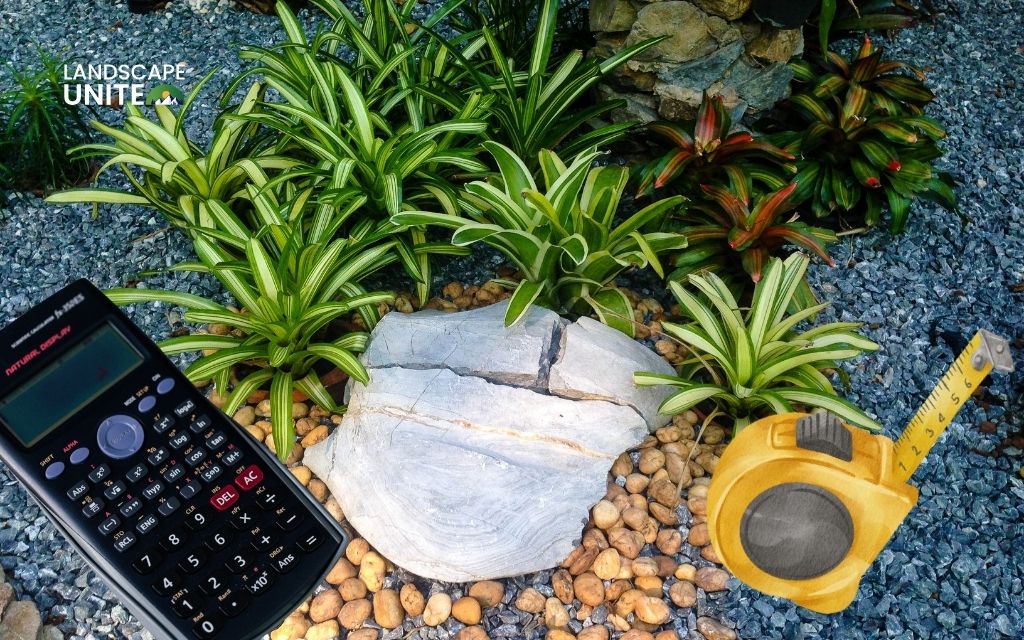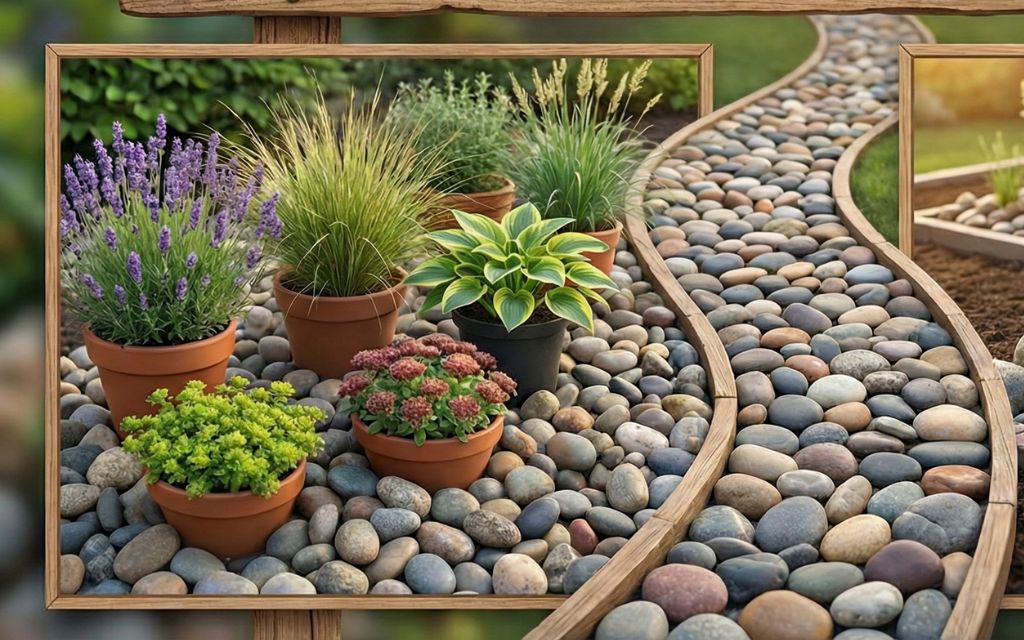Have you ever wondered how much does xeriscaping cost compared to maintaining a traditional lawn year after year? You’re not alone in asking this question. With water bills climbing nationwide and drought conditions affecting more regions, homeowners are discovering that xeriscaping offers both immediate beauty and long-term financial benefits.
Xeriscaping isn’t just about replacing grass with rocks. This strategic approach to water-wise landscaping combines native plants, efficient irrigation, and thoughtful design to create stunning outdoor spaces that thrive with minimal water. The xeriscape cost might seem significant upfront, but smart homeowners across the country are finding that understanding xeriscape cost factors helps them make informed decisions that pay for themselves within 3-5 years through reduced water bills and maintenance expenses.
In this guide, we’ll break down everything you need to know about xeriscaping cost per square foot, compare DIY versus professional installation expenses, explore available rebates, and show you practical ways to maximize your xeriscape cost investment.
Average xeriscaping cost in 2025
Understanding the baseline costs helps you set realistic expectations for your project. Here’s what homeowners across the United States are paying for xeriscaping:
Cost by project:
- Basic: $5 – $10 per square foot | Total project cost: $3,000 – $8,000
- Moderate: $10 – $15 per square foot | Total project cost: $8,000 – $15,000
- High-End: $15 – $25+ per square foot | Total project cost: $15,000 – $25,000+
The national average falls around $10 – $15 per square foot for a well-designed xeriscape project that includes professional installation, quality materials, drought-tolerant plants, and efficient irrigation.
Regional variations affect pricing too. Homeowners in drought-prone areas like California, Arizona, and Texas often find more competitive pricing due to higher demand and contractor expertise.
Xeriscape cost estimator by yard size
Planning your budget becomes easier when you understand how xeriscaping cost scales with different yard sizes. Use this breakdown to estimate your project investment and better plan your xeriscape cost allocation:
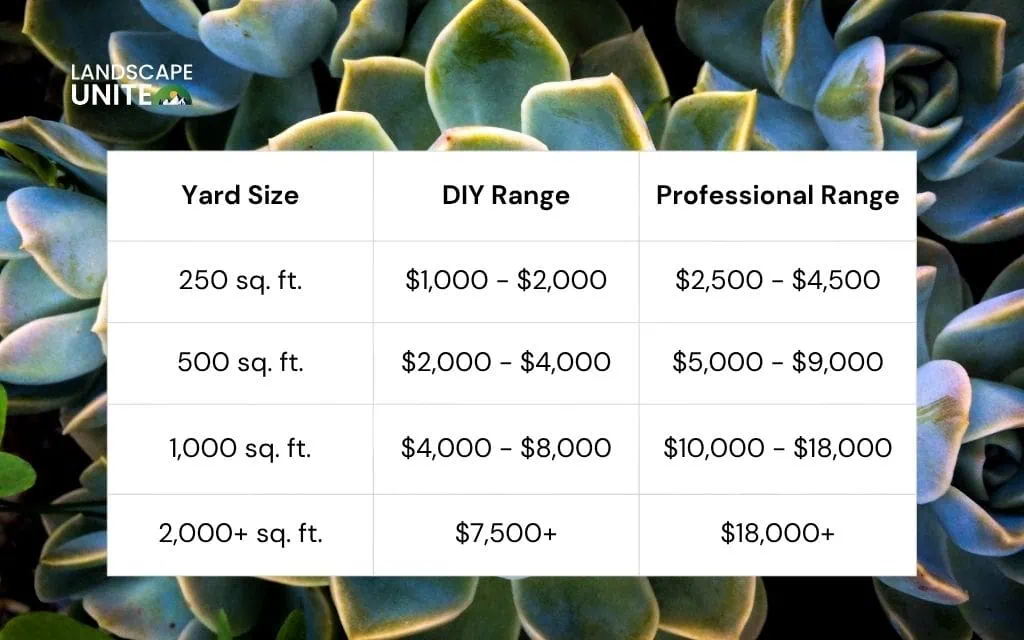
Remember that these estimates represent base installations. Adding features like decorative boulders, flagstone patios, or complex irrigation zones will increase your total investment. However, even premium xeriscaping projects typically cost less over five years than maintaining traditional lawns when you factor in water savings and reduced maintenance expenses.
Many homeowners discover that starting with a smaller area and expanding their xeriscape over several seasons helps spread costs while allowing them to learn what works best in their specific environment.
Cost breakdown by component
Let’s examine each element of a xeriscape project so you understand exactly where your money goes.
Design & planning
DIY design
Free – $500
Starting with DIY planning costs almost nothing if you use free online tools and resources. Budget $300 – $500 if you purchase design software or pay for a single consultation.
Professional Landscape Design
$1,000 – $5,000
Hiring a landscape designer ensures your project addresses drainage, plant selection, and irrigation efficiency from the start. This investment includes site analysis, detailed planting plans, and material specifications.
Full 3D Design or Contractor Planning
$3,000 – $8,000
Complex or large properties benefit from comprehensive design services. This premium option includes 3D renderings, multiple design iterations, and detailed contractor specifications.
Many landscape companies credit design fees toward installation if you hire them for the complete project.
Ground preparation
Proper preparation creates the foundation for long-term success.
Lawn removal
$1 – $2 per square foot
Removing existing grass involves cutting sod, hauling debris, and preparing the soil surface.
Professional removal for a 1,000 square foot area typically costs $1,000 – $2,000.
DIY lawn removal using a rented sod cutter reduces costs to $100 – $300 for equipment rental plus your labor.
Grading and leveling
$1,000 – $3,000
Correcting drainage issues and establishing proper slopes prevents water pooling and erosion. This critical step ensures water flows away from structures and reaches plant root zones.
Grading becomes more expensive on sloped properties or yards with significant drainage challenges.
Weed barrier installation
$0.50 – $1 per square foot
Quality landscape fabric suppresses weeds and reduces long-term maintenance. While optional, this layer pays dividends in reduced weeding time.
Professional installation costs $500 – $1,000 for an average yard, or you can DIY for $100 – $300 in materials.
Hardscaping and materials
Hardscaping provides structure, reduces maintenance areas, and adds visual interest.
Decorative gravel or decomposed granite
$1 – $4 per square foot
These materials form the backbone of most xeriscape designs. Gravel costs less, while decomposed granite offers a more refined appearance and better compaction. Expect to pay $1,000 – $4,000 for covering an average yard. Buying in bulk reduces per-ton pricing significantly.
Flagstone or pavers
$5 – $15 per square foot
Natural stone pathways and patio areas create functional outdoor spaces. Installation complexity affects pricing – simple paths cost less than intricate patterns. A 200 square foot patio typically runs $1,000–$3,000 including materials and labor.
Boulders and edging
$200 – $1,000+
Decorative boulders anchor planting beds and create focal points. Prices vary based on size and stone type. Edging materials (steel, plastic, or stone) define spaces and prevent material migration, costing $3 – $10 per linear foot installed.
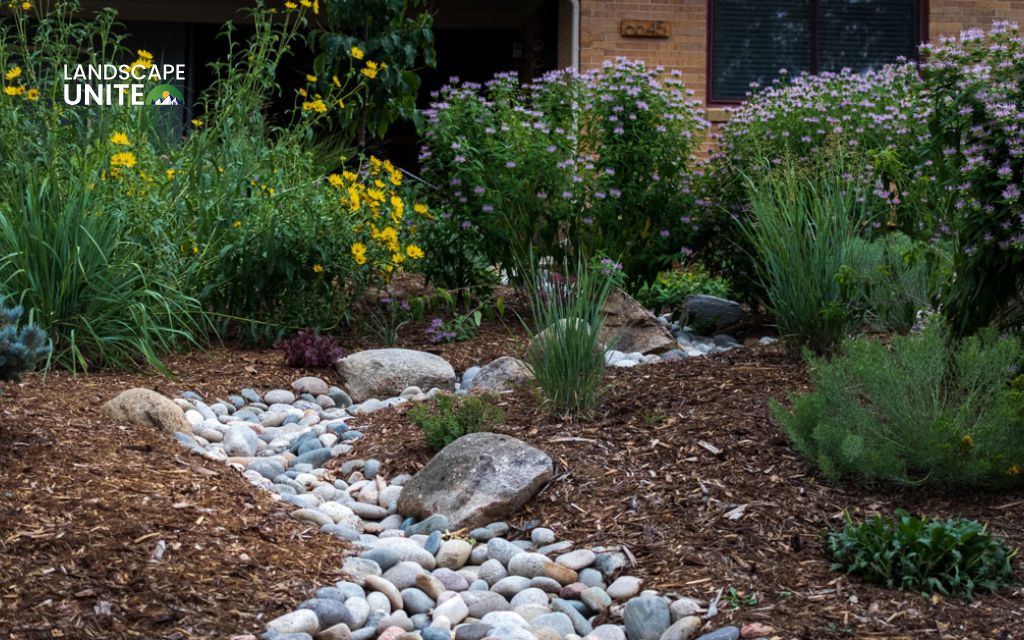
Plants and vegetation
Plant selection dramatically impacts both initial costs and long-term success. Native plants may cost more initially than generic landscaping plants, but they establish faster, require less water, and survive local weather extremes better than non-adapted species.
Drought-tolerant shrubs & perennials
$5 – $50 each
Native plants like lavender, sage, yucca, and ornamental grasses thrive with minimal water.
Smaller specimens cost $5 – $15, while mature plants reach $30 – $50. Plan on 20 – 40 plants for an average yard, totaling $300 – $1,500.
Native trees
$150 – $500 each
Regional species like palo verde, mesquite, and desert willow provide shade and structure. Container-grown trees cost more but establish faster than bare-root options. Budget for 2 – 5 trees depending on yard size, representing $500 – $2,000 of your plant investment.
Ground covers
$1 – $3 per square foot
Low-growing plants like ice plants, creeping thyme, and blue fescue soften hardscaping and prevent erosion. They’re more expensive than gravel initially but create living color and texture. Covering 100 square feet costs $100 – $300.
Cacti and succulents
$10 – $100 each
Dramatic specimens like agave, aloe, and barrel cactus serve as living sculptures. Prices reflect size and rarity. Starting with smaller specimens saves money while plants mature over time.
Irrigation system
Efficient water delivery is essential for xeriscape success.
Drip irrigation
$1.50 – $4 per square foot
Drip systems deliver water directly to plant roots, reducing waste by 30 – 50% compared to sprinklers. Professional installation for 1,000 square feet costs $1,500 – $4,000. This investment pays for itself within 2 – 3 years through water savings.
Smart controller upgrade
$150 – $500
Modern controllers adjust watering schedules based on weather conditions and soil moisture. This technology optimizes water usage automatically, delivering additional 15 – 25% savings beyond standard drip systems.
Conversion from sprinkler system
$1,000 – $3,000
Adapting existing sprinkler infrastructure to drip irrigation costs less than installing completely new systems. Contractors reuse main lines and valves while adding drip components, representing good value for properties with functional sprinkler systems.
Mulch and finishing touches
Final layers complete your xeriscape and enhance its performance.
Organic mulch
$0.50 – $1.50 per square foot
Bark, compost, or wood chip mulch retains soil moisture, moderates temperature, and adds nutrients as it decomposes. Budget $500 – $1,500 for an average yard. Organic mulch requires periodic replenishment every 2 – 3 years.
Rock mulch or stone top layer
$1 – $3 per square foot
Decorative stone provides permanent groundcover requiring no replacement. While initially more expensive, rock mulch eliminates ongoing mulch costs. Covering 1,000 square feet costs $1,000–$3,000.
Plant borders or edging
$3 – $10 per linear foot
Professional edging creates clean transitions between planting beds and hardscaping. This finishing touch enhances visual appeal and prevents material mixing. Expect to pay $500 – $1,500 for edging around an average yard’s planting areas.
Check out 15 simple and low-maintenance xeriscape ideas that can help reduce your landscaping renovation costs.
Factors that impact your total xeriscaping cost
Several variables can significantly affect your final project investment. Being aware of these factors helps you budget accurately and avoid surprises that could impact your planned xeriscape cost.
- Soil conditions: Heavy clay soil may need amendments costing $40 – $75 per cubic yard. Sandy soil might require different treatments. Professional soil testing, typically $50 – $150, can save money by identifying exactly what your landscape needs.
- Site preparation: Removing existing lawns, weeds, or unwanted plants costs $0.50 – $1.50 per square foot. Tree removal or major grading work requires additional investment.
- Access and terrain: Yards with limited access for equipment or steep slopes increase labor costs. Difficult terrain might require hand-carrying materials, impacting your total xeriscaping cost.
- Design complexity: Simple plant-and-mulch installations cost less than elaborate designs featuring multiple hardscape elements, outdoor living spaces, or artistic features.
- Plant maturity: Larger, more established plants cost more initially but provide immediate visual impact and can actually save money by eliminating years of growth time and replacement costs.
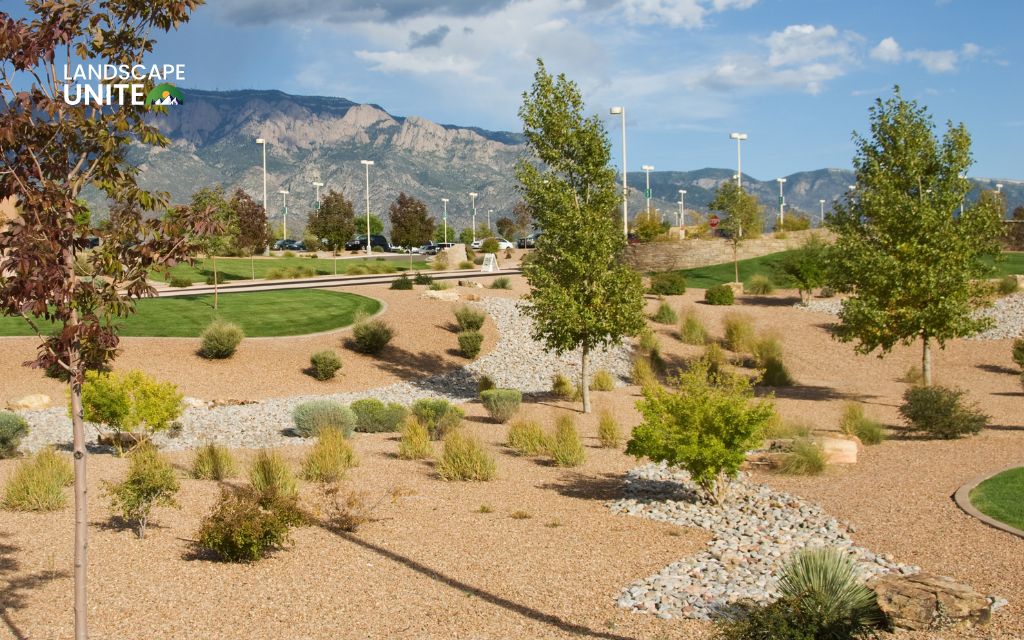
DIY xeriscaping vs. Professional installation
Here’s a realistic comparison to help you choose:
| Category | DIY Approach | Professional Installation |
| 1,000 sq. ft. cost | $4,000 – $8,000 | $10,000 – $18,000 |
| Time investment | 30 – 80+ hours | 2 – 5 days |
| Tools needed | $300 – $600 rental/purchase | Included in service |
| Design expertise | Self-guided research | Professional consultation |
| Labor requirements | Personal weekend/evening work | Included |
| Warranty coverage | Personal responsibility | Often included |
- DIY advantages: Lower material costs, personal satisfaction, ability to work at your own pace, and learning valuable landscaping skills.
- Professional advantages: Expert plant selection for your specific climate, proper installation techniques, established supplier relationships for better material prices, and warranty protection.
- Hybrid option: Many homeowners find success hiring professionals for design consultation and site preparation while handling plant installation themselves. This approach typically reduces total xeriscape cost by 20-30% while ensuring professional design quality.
Consider your comfort level with physical labor, access to tools, and available time before deciding. Remember that mistakes in plant selection or irrigation installation in xeriscaping can cost more to fix than hiring professionals initially.
Xeriscape vs traditional lawn cost comparison
The true value of xeriscaping becomes clear when you compare long-term costs with traditional lawn maintenance. Here’s a realistic five-year cost analysis:
| Category | Traditional Lawn | Professional Xeriscape |
| Initial installation (1,000 sq. ft.) | $4,000-$6,000 | $12,000-$15,000 |
| Annual water costs | $350-$600 | $100-$150 |
| Annual maintenance | High (mowing, fertilizing, reseeding) | Low (occasional pruning, weeding) |
| Equipment costs | Mower, spreader, sprinklers | Minimal hand tools |
| 5-year total investment | $8,000-$12,000+ | $12,500-$16,000 |
The return on investment typically begins in year three or four, with increasing savings each subsequent year. Homeowners in water-scarce regions often see even faster payback periods due to higher water rates and potential rebates.
Beyond financial benefits, xeriscaping provides property value increases of 15-20% in drought-prone areas, reduces weekly maintenance time from hours to minutes, and eliminates concerns about water restrictions during dry periods.
Cost-saving tips for xeriscaping on a budget
Smart strategies help you create beautiful, water-wise landscapes without breaking the bank.
- Prioritize native plants: Native species cost less initially, establish faster, and require minimal long-term care. They’re perfectly adapted to your climate, eliminating the need for soil amendments, extra water, or winter protection.
- DIY lawn removal: Professional grass removal costs $1 – $2 per square foot. Renting a sod cutter for $75 – $150 per day lets you handle this yourself, reducing a $1,500 expense to under $200.
- Start small and expand: Rather than xeriscaping your entire property at once, begin with your front yard or most visible area. This approach spreads costs across multiple years while letting you refine techniques before tackling larger spaces.
- Buying materials in bulk: Purchasing gravel, decomposed granite, and mulch by the truckload rather than by the bag saves 40 – 60%. A cubic yard delivered costs $30 – $80, while equivalent bagged material runs $150 – $300.
- Reuse existing materials: Before hauling away rocks, pavers, or usable plants, consider incorporating them into your new design. Relocated boulders cost nothing compared to purchasing new ones at $200 – $500 each.
Time your project strategically: Contractors often offer 10 – 20% discounts during off-season months (typically late fall and winter). Nurseries discount plants in fall when selection peaks but demand wanes. Strategic timing can save $1,000 – $3,000 on average projects.
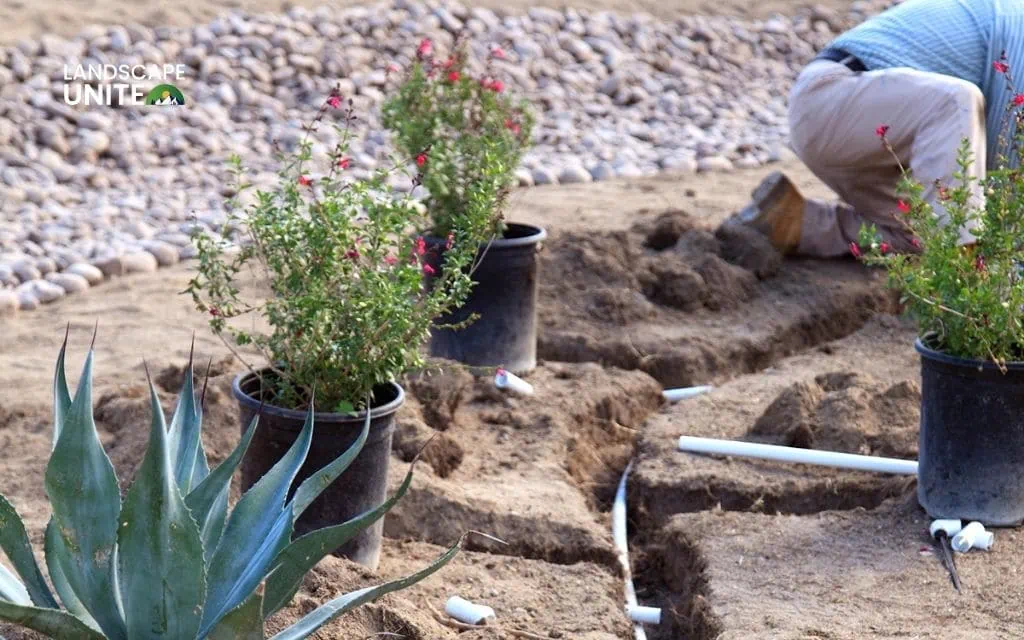
Is xeriscaping worth the investment?
When evaluating xeriscaping cost against long-term benefits, most homeowners find the investment pays dividends for years to come. The initial expense might seem substantial, but consider the complete picture. Explore more about xeriscaping benefits in this guide.
- Water conservation alone can save homeowners $200 – $800 annually compared to traditional lawns, with savings increasing as water rates rise.
- Maintenance time drops from weekly mowing and seasonal treatments to occasional pruning and minimal weeding.
- Property values in water-conscious regions increase with professional xeriscaping. Real estate professionals report that well-designed water-efficient landscapes attract buyers and can reduce time on market.
- Environmental benefits add another layer of value, support native wildlife, and eliminate chemical fertilizers and pesticides that traditional lawns require.
Conclusion
Xeriscaping transforms your outdoor space into a sustainable, beautiful landscape that saves money year after year. While initial costs range from $5 – $15 per square foot depending on project scope and your DIY involvement, the long-term financial and environmental benefits make this investment remarkably sound.
Ready to explore xeriscaping options for your property? Professional consultation and our landscaping blogs can help you understand specific costs and opportunities that saves you money for decades to come..
Frequently asked questions (FAQs)
How expensive is xeriscaping compared to traditional landscaping?
Professional xeriscaping typically costs $10 – $18 per square foot for installation, with average projects ranging $12,000 – $15,000 for 1,000 square feet. While initial costs exceed traditional landscaping by 20 – 30%, homeowners recoup their investment within 3 – 5 years through water savings and reduced maintenance expenses. For specific pricing tailored to your project, professional consultation provides the most accurate estimates.
Can I xeriscape my yard for under $5,000?
Yes, xeriscaping smaller areas or taking a DIY approach can keep costs under $5,000. Focus on high-impact areas like front yards or entryways, use generous mulch to reduce plant needs, and shop native plant sales for better pricing. Phasing your project over multiple seasons also helps manage costs while achieving your landscaping goals.
How much money does xeriscaping actually save?
Xeriscaping typically saves homeowners $200 – $800 annually through reduced water usage and maintenance costs. Properties with xeriscaping use 50 – 75% less outdoor water than traditional lawns, with savings increasing as water rates rise. Total savings include reduced equipment needs, eliminated fertilizer costs, and decreased labor for maintenance.
What’s the most cost effective ground cover for xeriscapes?
Organic mulch and decorative gravel offer the best value for xeriscape ground cover. Organic mulch costs $0.50 – $1.50 per square foot and improves soil. Decorative gravel ranges $1 – $3 per square foot and provides long-lasting coverage with minimal maintenance requirements.
Should I hire professionals or DIY my xeriscape project?
The decision depends on your available time, skills, and budget. DIY projects cost $4 – $8 per square foot but require significant time investment and tool purchases. Professional installation costs $10 – $18 per square foot but includes design expertise, proper installation, and often warranty coverage. Many homeowners choose hybrid approaches, hiring professionals for design and complex work while handling simpler installation tasks themselves.
